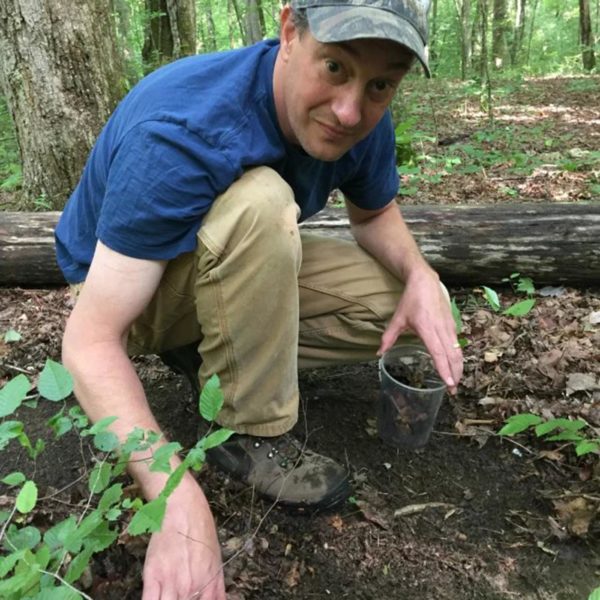
Listen to this Episode:
- From this webpage:
- Find the media player located under the episode picture.
- Click on the green triangle to listen to the audio for this episode.
- From your favorite podcast listening platform:
- Search for “Backyard Ecology.”
Show notes:
Hi Everyone! Today we are talking with Mac Callaham who is a Research Ecologist with the Southern Research Station of the U.S. Forest Service. Mac’s focus is on invasive species, with a specialty in soil animals, especially earthworms.
Like many people, I grew up thinking that earthworms were a good thing and a natural part of our ecosystem. However, that’s not completely true. In North America, many of our earthworms were wiped out during the Ice Age either directly from the glaciers or because the ground, even quite a distance out from the glaciers, was frozen.
We still have some native earthworms in the Pacific Northwest and parts of the southeast, but we also have quite a few non-native species of earthworms. Some of these non-native earthworm species have probably been here since the early European colonists arrived and brought their plants with them. Other species are much newer arrivals – some being discovered for the first time within the last few years.
The impacts of these non-native earthworms depends on where they are found. In more northern parts of the continent, the effects of the non-native earthworms can be devastating to the ecosystem. This is because the local ecosystem existed for so long without earthworms in it. However, in areas where there were native earthworms, the impacts are often not quite so drastic, but that doesn’t mean there are no impacts.
In many areas of the southeast, non-native earthworms are much more common than native species. Yet, even though the species composition has changed, we aren’t always seeing the same sort of dramatic impacts that are being seen further north. Part of that could be because those species have been in the southeast longer and part of it is likely that those species of non-native earthworms are doing some of the same things as the native earthworms in this area. However, some of the more recently discovered species of non-native earthworms can have quite drastic effects, even in the southeast, because their feeding behaviors are very different from the native species.
Throughout this episode, Mac and I talk about the different types of earthworms, their impacts in various parts of the region, how much we don’t know, and how there really isn’t a simple, black and white answer when it comes to earthworms. Yes, non-native earthworms can have serious, negative impacts on the natural ecosystem, especially in parts of the continent. But in other areas, earthworms, even non-native species, can help soil health, especially in southern regions that have been highly impacted through long-term agricultural use. This is a complicated topic and we talk about some of those complications, including things that we as homeowners can do.
Links:
- Southern Research Station
- Earthworm related Research Highlights from the Southern Research Station:
- Mac’s email: mac.a.callaham@usda.gov
- Other groups or researchers mentioned who are studying earthworms:
- Books mentioned:
- Backyard Ecology’s website
- My email: shannon@backyardecology.net
* Amazon links are affiliate links and I earn a small commission from qualifying Amazon purchases made the link. The commission is paid by Amazon and comes at no extra cost to you, but helps support the costs associated with hosting the Backyard Ecology blog, podcast, and website.
Photo credit: Yuanyuan Li

Backyard Ecology: Exploring Nature in Your Backyard
Nature isn’t just “out there.” It’s all around us, including right outside our doors. Hi, my name is Shannon Trimboli, and I am the host of Backyard Ecology. I live in southcentral Kentucky and am a wildlife biologist, educator, author, beekeeper, and owner of a nursery specializing in plants for pollinators and wildlife conservation. I invite you to join me as we ignite our curiosity and natural wonder, explore our yards and communities, and improve our local pollinator and wildlife habitat. Learn more or subscribe to my email list at www.backyardecology.net.

Leave a Reply